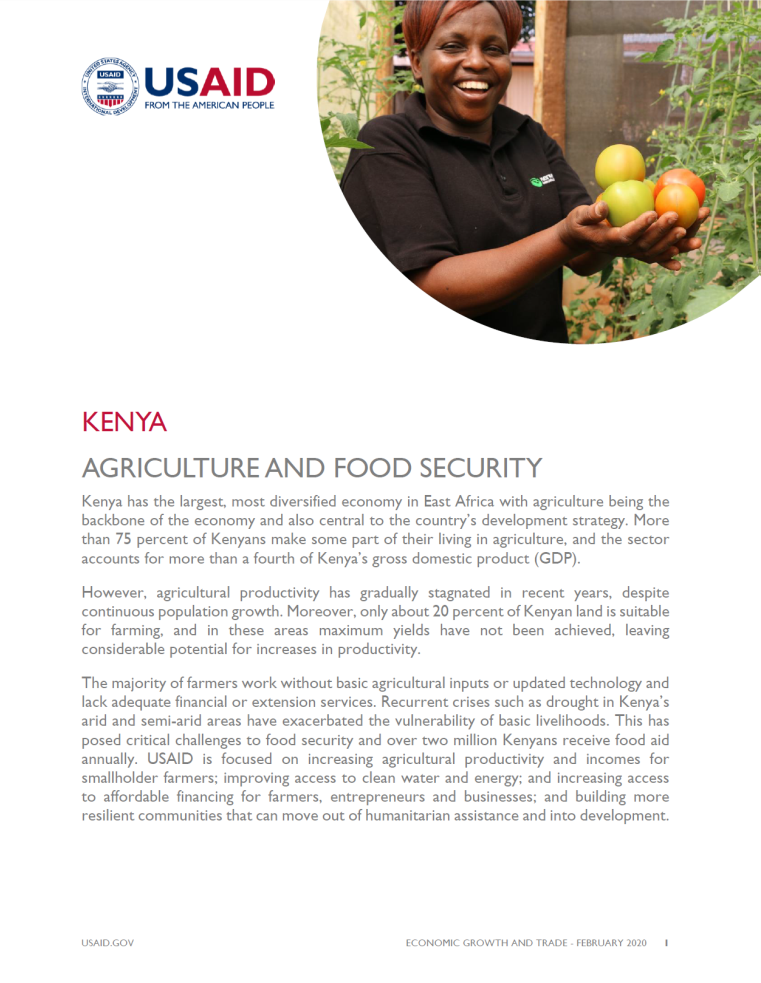Speeches Shim
Kenya has the largest, most diversified economy in East Africa with agriculture being the backbone of the economy and also central to the country’s development strategy. More than 75 percent of Kenyans make some part of their living in agriculture, and the sector accounts for more than a fourth of Kenya’s gross domestic product (GDP). However, agricultural productivity has gradually stagnated in recent years, despite continuous population growth. Moreover, only about 20 percent of Kenyan land is suitable for farming, and in these areas maximum yields have not been achieved, leaving considerable potential for increases in productivity.
The majority of farmers work without basic agricultural inputs or updated technology and lack adequate financial or extension services. Recurrent crises such as drought in Kenya’s arid and semi-arid areas have exacerbated the vulnerability of basic livelihoods. This has posed critical challenges to food security and over two million Kenyans receive food aid annually. USAID is focused on increasing agricultural productivity and incomes for smallholder farmers; improving access to clean water and energy; and increasing access to affordable financing for farmers, entrepreneurs and businesses; and building more resilient communities that can move out of humanitarian assistance and into development.


Comment
Make a general inquiry or suggest an improvement.